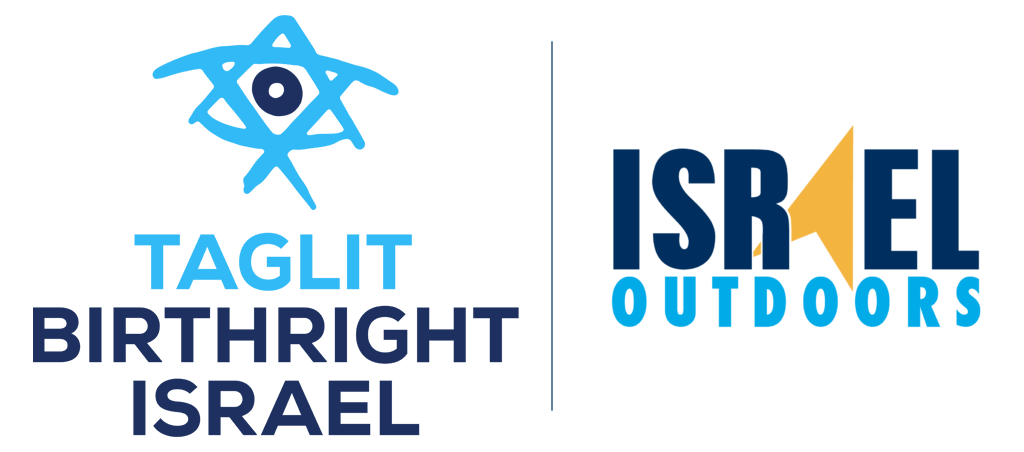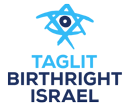Update from Israel #Bus350
Dear Friends,
We last spoke as we were preparing for our serious day in Jerusalem.Putting Yad Vashem and Mt. Herzl into words appropriate for me, you, and the participants is a difficult task. These two sites are loaded with, to many of us, a distant historical memory and Jewish tradition that would be otherwise less comprehensible without the framing and space created by our guides and Israeli participants. These are very personal experiences; telling you my experience or that of the participants will not do justice to these spaces. You should experience them yourselves, and you should definitely ask your friends/family about their own journeys. That being said, here a couple comments from individuals in the group:* I learned the importance of preserving the Jewish religion. I did not understand why I would want to raise my kids Jewishly until I went there.
I felt a little disconnected from these spaces. My family all arrived in the US before WWI. We did not lose anyone to the Holocaust and no one was in Israel. I don’t see these as my stories. And as I’ve already learned these histories, I don’t know if this was any more impactful than other times I’ve learned about this stuff.
I wish we had a full day there. There are too many stories and things to learn about my people. These spaces make me so much more concerned about my Jewish identity.
While at Mt. Herzl, some of our Israeli participants shared stories (as a group and individually to participants) about their connections to this military and political cemetery. Many of them had friends or neighbors who are buried in the newer sections of the cemetery (buried within the past 6 years). One grave that we stopped at was of Michael Levine, a soldier who fell in the 2006 Lebanon War. Levine grew up in Philadelphia, coming to Israel as a Lone Soldier, one without Israeli family. After his death, his parents and friends helped found a group to support soldiers who come from abroad and do not have the support network of most Israelis. His story is very powerful and quite accessible to an American audience (there is a documentary, newspaper articles aplenty, etc.).
After this heavy morning, we shuttled over to Shuk Mahane Yehuda, Jerusalem’s famous outdoor market, to experience the balagan (craziness) that is this fresh gourmet haven as the Holy City prepares for Shabbat. Participants enjoined Iraqi sabich sandwiches (fried eggplant, hard-boiled eggs, pickled veggies, hummus, tahini); Iraqi comfort food from Azura (notably, its kubbeh soup, beef-stuffed eggplant, moussaka, and beef head(!); various fresh produce (plums, apricots, cherries, peaches, strawberries, and watermelon) and dried fruit + nuts; and halva like your bubbie could only dream of. Being in the market was compared to walking the streets of Bangkok, being in a moshpit, shopping on Black Friday, insanity, “so worth all of it over and again, and straight-up epic.” It is impossible to go to Mahane Yehudah without experiencing some of Jerusalem’s famous bakeries, notably Marzipan and its incomparable chocolate rugelach. Some say that this sweet is worth more than the fluffiest challah or the most tender brisket.Arriving back at the kibbutz, we prepared for Shabbat. Dressing up in our finest (a jeans version of business casual is about as fancy as most Israelis ever get), we lit candles, sang a song, and enjoined a feast. Then we had an oneg (Hebrew for pleasure) where we shared our sweets and treats from the market to make this Shabbat even sweeter. We reminisced about the trip, learned more about each other, and generally calmed down after a week of overwhelming stimuli.
Saturday was largely spent relaxing by the pool. The staff organized a few Jewish identity programs where participants were able to challenge and think deeply about what values they most identify with. Great conversations and introspection. As Shabbat was ending, we had a Havdallah ceremony followed by a fun program run by our Israeli participants where we created skits about our weeks funniest moments.
Sunday morning began with a political historical lesson by Stand With Us. Not enough coffee but then we rocked Mt. Zion and the Jewish Quarter, rising us from our stupor. Walking through the old market street, the Cardo, we learned about the different layers of history of the Old City from its Temple times through to 1967 and the modern day. For many, walking up to the Western Wall, the closest space accessible to Jews of the Temple Mount, many participants were at a loss for words. It may not have been a traditionally religious moment, but the weight of history and family brought many people to tears. It is amazing to think that 50 years ago, the Western Wall was inaccessible to most Jews; that it was unsafe for most people to put a note in the wall or make a blessing in its courtyard. Our past day in Jerusalem helped us understand that this space is not just about history, but about memory, of our shared identity, heritage, and tradition. Was it deep? Yeah. Unforgettable? Yeah. Overwhelming and incomprehensible? Quite.
We had lunch in the Jewish Quarter and then we went to Ben Yehuda Street for some shopping before taking the bus to the base of Mt. Masada for our evening under the stars. Supported by an Argentinian-Israeli camping group called Ekipo, we slept outside on mattresses. An amazing dinner of chicken kebabs, burgers, hot dogs, tahini, salads, slow roasted onion, and watermelon put the group in a state of euphoria. A bonfire with hot mint lemon drink and s’mores set the stage for the light pollution-free starscape, shooting stars, and great music.
3:30 am wakeup for cake, coffee, tea, and pears before heading towards the Snake Path up Masada. Some were able to make it to the top for sunrise while others managed to reach the peak as the sun was passing over the Jordanian mountains on the east side of the Dead Sea. This awe-inspiring view is the reason so many Israelis and tourists brace their knees for the early morning workout. Pilates may be a good workout, but this is one serious workout. Definitely worth it.
By 9:00 am we are on our way down the Snake Path for breakfast at the visitor center. Then we did the Nahal David trail at Ein Gedi, an oasis up the road from Masada. Participants hopped under the desert waterfall, enjoying this peculiarity of Judaan Desert history before preparing for a relaxing lunch at Ein Bokek, a beach on the Dead Sea where all one has to do is lie back and they will float away into the cerulean saltwater sea found in the lowest point on earth.
We dropped off the Israelis at the bus station in Dimona on our way to the Bedouin Tents where we spent the night. After a camel ride and an introduction to Bedouin hospitality, we had dinner sitting on the ground.
A long night of fun only to be rudely remembered by our neighboring tent mates who had an earlier wakeup. Our 7 am morning turned into a 6 am jolt into the sunshine. Fortunately, Avery had a great desert morning playlist (ft. Lion King, songs from the Gladiator soundtrack, and Here Comes the Sun) that made this much more tolerable. We had coffee and tea with standard Israeli breakfast before marching on to the bus for an introduction to the Negev desert. As we walked towards Yitzhak Rabins grave/overlook, we walked past a family (herd?) of ibex enjoying their breakfast. It was amazing to see such majestic, nimble wild animals embracing the desert changes as giddily as we were. An introduction and explanation of Ben Gurion’s vision of Israel, making the desert bloom, and some pre-state history.
A short bus ride to the top of the Ein Ovdat hike, where we walked through a valley/stream-bed at the base of Sde Boker. The heat during the hike was debatably oppressive (similar to the experience of camel riding for many). We learned about the geologic history of the region (it was an ocean and a shallow sea) as well as the surprising hydro-geologic features that allow for there to be a constantly flowing waterfall throughout the year, which led us to our greatest disappointment of the hike; our inability to go for a dip. As we learned, Israelis will take most every opportunity to swim, so to protect the fragile micro-climate, the parks service was compelled to place signs every 20 feet to remind us not to cool ourselves off. Not being able to swim in such a nice stream felt like cultural (and physical) cruelty but there was an ice cream stand at the end of the hike, so, small win.
Lunch was in a mall in Beersheva before we headed north for our final evening. We will be sleeping in Netanya; but, having a night out in Tel Avivs Sarona neighborhood. Before we head out, we will have a wrap-up program to help coalesce some of our experiences before we depart Wednesday afternoon (after a morning in Jaffa featuring Hebrew name ceremonies and B’nai Mitzvot).
Cheers,
#Birthright #IsraelOutdoors #Bus350


